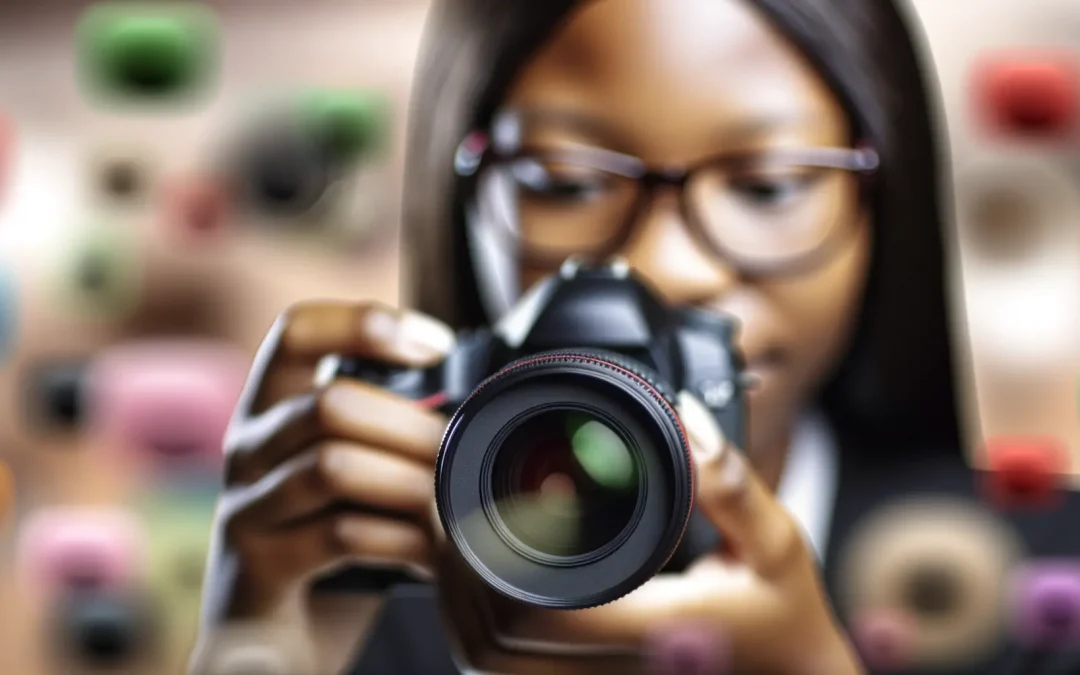Depth of field transforms ordinary photos into captivating compositions. Learn how to manipulate it creatively, using the latest trends and techniques. Empower your skills and enhance your storytelling through innovative camera settings.
Understanding Depth of Field
Depth of field is the range in an image that’s sharply in focus.
So, what affects it? Three elements: aperture, focal length, and distance. The aperture is the size of the lens opening. A smaller f-stop number means a larger aperture, which can create a shallower depth of field. It’s like looking through a window, where the wider the opening, the more select your focus becomes.
Now, consider focal length. A longer lens compresses the scene, deepening the blur of out-of-focus areas. If you’ve ever used a telephoto lens to capture a distant mountain, you’ve felt this effect. The mountain seems to pop from its misty background.
Then there’s distance. The proximity of your subject to the lens affects depth of field dramatically. Close-up shots can achieve intimate focus, isolating the subject against a beautifully blurred background. On the other hand, landscapes captured with a wide-angle lens often maintain clarity across the entire scene.
As a little experiment, try these techniques the next time you walk through a bustling market. Focus on an intricate piece of jewellery and watch the vendor blend softly into the backdrop. It’s just one example among many. For more on creating striking compositions, explore the rule of thirds.
Think of depth of field like seasoning in a dish. It enhances flavour, highlighting what’s important. This control over focus can feel quite empowering in photography. You’ve got the tools, how you use them is the art.
Creative Uses for Shallow Depth of Field
Shallow depth of field can dramatically elevate your photographic craft.
Picture capturing a portrait where just the eyes are in sharp focus, creating a magnetic pull. This is possible when you use a wide aperture like f/2.8, which lets you delicately blur the background, making your subject pop as if revealing its soul to the lens. Isn’t that something we all strive for?
Now, it’s not just about the subject. The background becomes its own character through what is hinted rather than shown. It adds a whisper of context, leaving room for the imagination. This technique can really boast its magic when the backdrop’s chaos is reduced to gorgeous, creamy colours in street photography or a garden’s textures in macro shots.
Admittedly, finding the right lens, maybe something like the Canon EF 50mm f/1.8, can make a world of difference. Trust me, borrowing a mate’s lens opened my eyes to depth’s charm. No need to limit your creativity there. Experiment, maybe lose yourself a bit in the exploration.
Explore the intricate dance between focus and blur, reaching a point where the technique becomes part of your identity. For some tips that might complement this approach, consider checking how to master the bokeh effect in photography.
Mastering Deep Depth of Field
Deep depth of field captures our world in unforgiving detail.
Used correctly, it can transform how we perceive the grandness of a scene. Imagine peering into a vista or architectural marvel where every leaf and stone speaks to you. Achieving this isn’t just a matter of chance. Start with your camera’s narrow apertures, perhaps f/11 or smaller, to keep everything razor-sharp. Trust me, it makes all the difference. A sturdy tripod and a thoughtful composition can do wonders too. Remember those wide vistas at the golden hour, where everything’s in focus? The trick lies in the balance of settings and nature’s mastery.
Now, ISO and shutter speed come into play. To counteract the smaller aperture’s reduced light, slow your shutter speed, but not too slow, and bump the ISO only if the light demands it. This is crucial, don’t rush the tactile dance with your equipment. I’ve found that experimenting with different perspectives and compositions, like leading lines in architecture, can add depth to your story.
As you explore, you’ll find that a deep depth of field is perfect for storytelling in photography. Every element becomes a character in your narrative, contributing to the grandeur of the shot.
To dive deeper into related techniques, check out this guide on the best lenses for landscape photography, which accompanies our exploration perfectly. Meanwhile, let your creativity flow, with the details sharp and clear as your vision unfolds.
Leveraging Equipment and Technique
Depth of field is an exciting area where modern technology truly shines in photography.
Think of your camera as a painter’s brush. It captures depth, texture, and emotion. That’s the magic of choosing the right lens. Consider something like a Canon EF 50mm f/1.8 STM. Lenses like these let you play around with the background blur, that dreamy bokeh effect that seems almost magical. And the type of lens you choose? It will dramatically alter your creative potential.
But let’s not stop there. Camera settings are crucial. Ever fiddled around with aperture? Sometimes, you might want a wide aperture, like f/1.8, to isolate your subject, creating those soft, blurred backgrounds that lend a touch of mystery. Or maybe a narrow aperture to keep every detail sharp and true from front to back. Each choice whispers a different story to your audience.
Then, there are accessory tools like neutral density filters. These are like sunglasses for your lens, letting you shoot with a wide aperture even in full sun.
Isn’t it fascinating how technology keeps opening new doors for creativity? For those ready to explore infinite possibilities, connecting with expert coaches can be invaluable. A little guidance, and you’re on your way to craft images that don’t just capture sights but also capture hearts.
Final words
Grasping depth of field will redefine how you view and capture images. Whether you use a shallow or deep depth of field, these techniques provide endless creative opportunities. By understanding and manipulating DoF, empowered by advanced gear and insights, your photography will evolve, offering captivating visuals every time.

